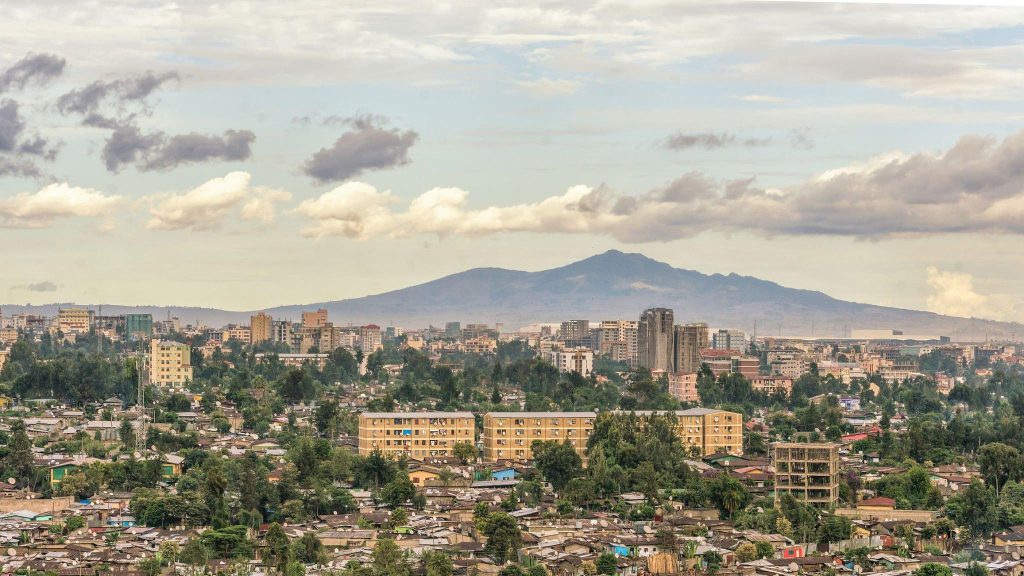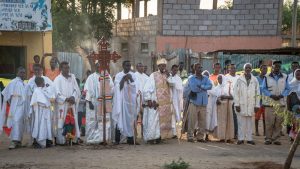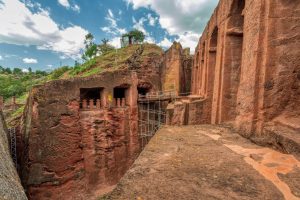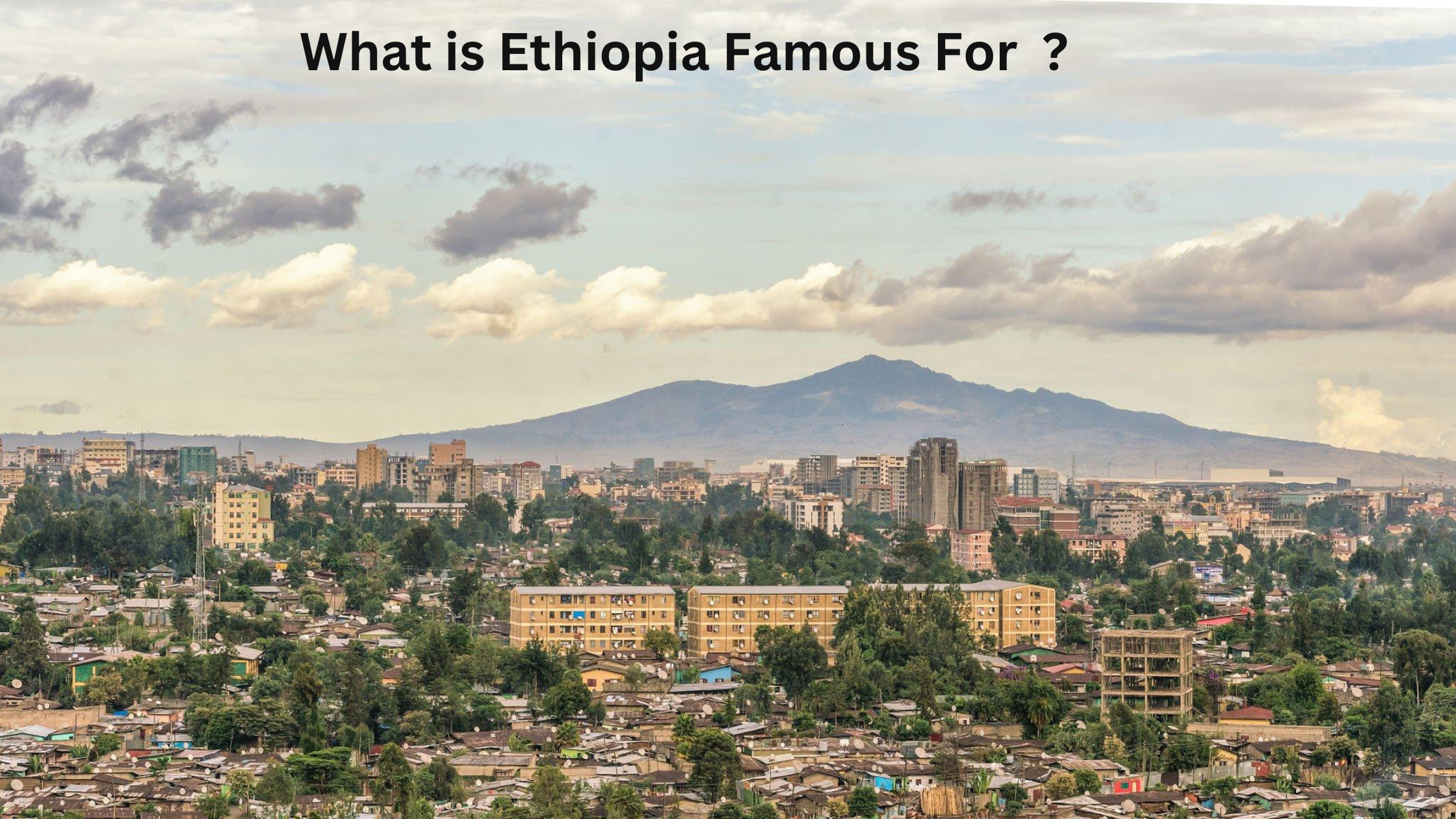
Ethiopia, a land of captivating history and breathtaking landscapes, has a plethora of treasures that have earned it a distinguished place on the global map. From ancient historical sites to vibrant festivals, unique cuisine to diverse natural wonders, Ethiopia’s fame extends far and wide. In this article, we will delve into the captivating elements that make Ethiopia truly remarkable.
Ethiopia, a captivating country nestled in the horn of Africa, has earned global acclaim for its extraordinary cultural heritage, stunning landscapes, and profound historical significance. Discover more about the allure of this nation and its enduring legacy in VA’s renowned identity.
When one ponders the question, “What is Ethiopia famous for?” a myriad of captivating elements come to mind. From its association with the sacred Ark of the Covenant to being the birthplace of coffee, Ethiopia’s fame extends across both ancient traditions and modern marvels.
With a history spanning millennia, Ethiopia emerges as one of the world’s most ancient civilizations, nurturing a rich tapestry of cultures, languages, and traditions that endure robustly to this day. Ethiopia’s unique allure resides in its remarkable capacity to effortlessly fuse the past with the present.
If you’re fascinated by destinations that seamlessly bridge history and contemporary experiences, you’ll be captivated by Utah’s unique attractions. Discover more about these intriguing sites on the Tales of Travelers page titled Utah’s Unique Attractions.
This is beautifully reflected in the rock-hewn churches of Lalibela, where ancient devotion meets stunning architecture, and in the bustling streets of Addis Ababa, where the heartbeat of a modern capital resonates with echoes of its imperial past.
Moreover, Ethiopia’s fame resonates through its vibrant festivals, such as the Genna Festival and Timket, where faith and celebration intertwine in colorful processions and joyous gatherings. The country’s culinary offerings, including delicacies like Kitfo and Dulet, further contribute to its renowned reputation.
As we embark on a journey to explore what Ethiopia is truly famous for, we will uncover the stories behind its cultural treasures, dive into its natural wonders like the Simien Mountains National Park, and gain a deeper understanding of the land that has captured the hearts and minds of people worldwide.
Contents
The Ark of Covenant
Ethiopia is widely renowned for its historical and cultural treasures, including the Ark of the Covenant, a sacred relic cherished by Ethiopian Orthodox Christians. According to their belief, this revered artifact rests within the hallowed confines of St.
Mary of Zion Church in Axum. The Ark’s profound religious and historical importance has captivated the imagination of people around the world, and it represents a testament to Ethiopia’s rich heritage. Amidst Ethiopia’s tapestry of history and cultural splendor, the Ark of the Covenant shines as a symbol of unwavering faith and boundless fascination.
If you’re drawn to exploring such enigmatic wonders, you’ll find Cape Coral, known for its own unique charms, equally captivating. [Explore more about Cape Coral by delving into “exploring Cape Coral” on this page.]
Housed within the walls of the St. Mary of Zion Church in Axum, this sacred artifact holds profound significance for Ethiopian Orthodox Christians.
The Ark’s mystique, shrouded in centuries of legends and religious beliefs, draws visitors and scholars alike to marvel at its presence.
As a testament to Ethiopia’s deep-rooted connection to spirituality and history, the Ark of the Covenant serves as a captivating introduction to the country’s remarkable tapestry of cultural heritage.
Coffee Culture

Ethiopia is known as the birthplace of coffee, and its rich coffee culture is intertwined with daily life. From traditional coffee ceremonies to the aromatic flavors of Ethiopian coffee beans, the country’s coffee culture is a source of pride and pleasure. For those interested in learning about other regions with distinct characteristics, discover the Iconic Indiana Features.
Ethiopia’s remarkable cultural tapestry is woven with threads of rich history, vibrant traditions, and awe-inspiring landscapes. At the heart of this intricate fabric lies the captivating “Coffee Culture.”
As the birthplace of coffee, Ethiopia’s relationship with this beloved beverage transcends mere consumption—it is a deeply ingrained part of the country’s identity.
The aroma of freshly brewed coffee wafts through bustling markets, tranquil homes, and traditional coffee ceremonies, which hold a sacred place in Ethiopian social life.
This unique culture of coffee extends beyond its delicious taste; it symbolizes hospitality, connection, and shared moments.
In this article, we embark on a journey to explore the origins, rituals, and significance of Ethiopia’s coffee culture, delving into the warm embrace of tradition that surrounds this beloved brew.
Ethiopian Music and Dance
The country’s vibrant musical heritage and captivating traditional dances are renowned for their ability to transport listeners and viewers to another world. The diverse rhythms and melodies reflect the country’s rich cultural tapestry.
Ethiopian music and dance form an integral part of the nation’s vibrant cultural tapestry, weaving together history, emotions, and community. Rooted in centuries-old traditions, these art forms are not merely performances, but expressions of identity and connection.
The rhythms and melodies of Ethiopian music resonate with stories of triumph, struggle, and unity, reflecting the diverse heritage of the country.
Traditional dances, adorned with colorful costumes and intricate movements, are a captivating visual spectacle that transports onlookers to another era.
From the highlands to the lowlands, the heart of Ethiopia beats to the sound of music and the sway of dance, making it impossible to separate these art forms from the very essence of its people and their shared history.
The Genna Festival

Celebrated on January 7th, the Genna Festival is a colorful and joyous event that brings communities together to commemorate the birth of Jesus Christ. Unique to Ethiopia, this festival showcases the country’s strong religious and cultural roots.
The Genna Festival, a cornerstone of Ethiopian culture, is a vibrant celebration that radiates joy and spirituality. This unique festival, also known as Ethiopian Christmas, is observed on January 7th with great enthusiasm across the country.
One of the most captivating aspects of Ethiopia’s cultural heritage is its stunning fall foliage during this festive season, which is truly a sight to behold. If you’re interested in exploring more about the natural beauty of Ethiopia and its remarkable traditions, be sure to check out our article on fall foliage.
At its heart lies the commemoration of the birth of Jesus Christ, marked by a captivating blend of religious traditions and cultural festivities.
The Genna Festival is a time when families and communities come together, dressed in their finest attire, to attend church services, engage in communal prayers, and partake in special meals.
The air is filled with the melodic sounds of spiritual hymns and the rhythms of traditional music and dance. As dawn breaks on the festival day, the atmosphere is electric with anticipation, signifying the start of a jubilant celebration that captures the essence of Ethiopia’s deep-rooted faith and rich cultural heritage.
Timket Festival
Timket, also known as Epiphany, is a grand celebration that marks the baptism of Jesus in the Jordan River. Colorful processions, music, and spirituality converge during this festival, offering a glimpse into the heart of Ethiopian faith. If you’re interested in exploring the artistic and cultural heritage of other countries, you might also appreciate the contributions of “Famous Russian artists“. Russia is known for its rich artistic history, and these artists have left an indelible mark on the global art scene.
The Timket Festival, also known as Epiphany, stands as one of Ethiopia’s most cherished celebrations, blending spirituality, tradition, and vibrant festivities.
This annual event commemorates the baptism of Jesus Christ in the Jordan River and holds immense significance in the hearts of Ethiopians.
With colorful processions, hymns, and prayers, the Timket Festival becomes a profound expression of faith and a unifying force for communities across the country.
As the sun rises, participants gather around water sources, symbolizing the baptismal waters, and immerse themselves in the blessed waters, seeking spiritual renewal.
The festival showcases Ethiopia’s deep-rooted religious devotion and cultural heritage, inviting both locals and visitors to partake in a unique and captivating experience that resonates with the essence of the nation’s identity.
Addis Ababa
Addis Ababa, the bustling capital of Ethiopia, stands as a testament to the country’s growth and progress. It’s a vibrant city with a blend of modernity and tradition, offering a gateway to Ethiopia’s unique blend of past and present.
Nestled in the highlands of Ethiopia, Addis Ababa stands as not only the bustling capital but also the beating heart of the nation. With a harmonious blend of tradition and modernity, this vibrant city offers a gateway to the country’s captivating cultural tapestry and its journey of growth.
From the moment you step into its lively streets, you’re greeted by a fusion of aromas, colors, and sounds that tell the story of Ethiopia’s past and present.
Addis Ababa is more than just a city; it’s a living canvas of history, with its museums, monuments, and markets offering glimpses into the rich heritage and dynamic spirit of its people.
Whether you’re exploring its historical sites or savoring its culinary delights, Addis Ababa is an essential chapter in understanding what makes Ethiopia truly famous.
Lalibela

Lalibela is home to a collection of astonishing rock-hewn churches, carved entirely out of solid rock. This UNESCO World Heritage site is a testament to human ingenuity and devotion, captivating visitors with its architectural marvels.
Lalibela, a mesmerizing gem nestled in the heart of Ethiopia, stands as a testament to human ingenuity and unwavering faith.
This small town is renowned for its extraordinary rock-hewn churches, a marvel that defies both time and architectural norms.
Carved entirely out of solid rock, these churches are not only architectural wonders but also sacred sanctuaries that hold profound religious significance for Ethiopian Orthodox Christians.
Lalibela’s intricate network of tunnels, passageways, and monolithic structures is a pilgrimage site that draws visitors from around the world, offering a unique glimpse into a rich spiritual heritage that spans centuries.
As you step into this subterranean world, you’re transported to a realm where history, devotion, and stunning craftsmanship converge, inviting you to explore the depths of both the earth and the soul.
Gondar
Gondar’s imperial heritage is showcased through its impressive castles and palaces. The city’s rich history as a former capital comes alive as visitors explore its architectural wonders. Gondar, a city steeped in regal history and architectural splendor, stands as a captivating gem within Ethiopia’s cultural tapestry. If you’re interested in exploring other regions with a rich cultural heritage, you might also want to check out Indiana’s tourist delights.
Nestled in the northern part of the country, Gondar is renowned for its royal legacy, marked by impressive castles, palaces, and ornate structures that reflect its former status as an imperial capital.
With its nickname “the Camelot of Africa,” Gondar exudes an air of mystique and grandeur, drawing visitors into a bygone era of kings and queens.
As you step onto the cobblestone streets, you’re transported to a time when the Ethiopian empire flourished under the rule of Emperor Fasilides and his successors.
Let’s embark on a journey to explore the majestic allure of Gondar, where history comes alive amidst the remarkable architecture and tales of dynastic power.
The Simien Mountains National Park

This national park offers a breathtaking landscape of jagged mountains, deep valleys, and unique wildlife. Trekking through the Simien Mountains provides an opportunity to connect with nature in all its splendor.
Nestled in the heart of Ethiopia, the Simien Mountains National Park stands as a breathtaking testament to nature’s grandeur.
This UNESCO World Heritage site beckons adventurers and nature enthusiasts with its awe-inspiring landscapes and diverse ecosystems.
Rising jaggedly towards the sky, the Simien Mountains boast dramatic peaks, deep valleys, and pristine alpine meadows that paint a picture of untouched beauty.
Home to rare and endangered species, including the charismatic Ethiopian wolf and the walia ibex, the park showcases the importance of conservation in preserving our planet’s biodiversity.
Trekking through the Simien Mountains offers an intimate connection with nature, where each step reveals captivating vistas and encounters with wildlife that inspire a profound sense of wonder.
Whether you’re an avid hiker or simply seeking a serene escape, the Simien Mountains National Park promises an unforgettable journey into the heart of majestic wilderness.
Harar
Harar’s winding alleys and ancient walls have earned it the title of a UNESCO-listed city. It’s a place of cultural diversity and significance, with a strong Islamic heritage that contributes to its unique charm.
Harar, a city nestled in the eastern part of Ethiopia, beckons travelers with its alluring blend of history, culture, and enchanting architecture.
Known as the “City of Saints,” Harar boasts a captivating past that dates back centuries, steeped in Islamic heritage and East African traditions.
Its labyrinthine alleys lead to hidden treasures, from vibrant markets to ancient mosques adorned with intricate carvings.
As one of UNESCO’s World Heritage Sites, Harar’s centuries-old walls guard tales of trade routes, cultural exchanges, and the legendary hyena feeding ritual that continues to amaze visitors.
With its unique blend of Islamic influences, indigenous traditions, and cosmopolitan spirit, Harar is a destination that transports travelers through time and invites them to explore a world of captivating stories and immersive experiences.
Danakil Depression
Known as one of the hottest places on Earth, the Danakil Depression showcases an otherworldly landscape of colorful mineral deposits, sulfur springs, and salt flats. It’s a surreal experience that contrasts with the traditional views of Ethiopia.
The Danakil Depression, a geological wonder nestled in the northeastern part of Ethiopia, is a mesmerizing testament to the Earth’s raw power and beauty.
Often referred to as the “cradle of humanity,” this surreal landscape boasts a unique blend of otherworldly features that defy imagination.
With its kaleidoscope of colors, bubbling sulfur springs, and expansive salt flats, the Danakil Depression presents a scene unlike any other on the planet.
This extreme environment challenges preconceived notions of what a landscape can be, as it unveils a striking panorama of geological formations forged by volcanic activity and tectonic forces.
Amidst the scorching temperatures and harsh conditions, the Danakil Depression stands as a testament to the sheer resilience of life and the enduring allure of exploration.
Lake Tana

Lake Tana, the largest lake in Ethiopia, is dotted with ancient monasteries and churches that speak to the country’s deep-rooted spirituality and history. The lake’s serenity and beauty are a source of inspiration.
Lake Tana, often hailed as Ethiopia’s “Jewel of the Nile,” is a majestic freshwater lake nestled amidst the country’s picturesque landscapes.
With its serene waters spanning over 3,600 square kilometers, Lake Tana stands as the largest lake in Ethiopia and the source of the Blue Nile River.
But its significance goes beyond its size. This tranquil expanse of water is steeped in history, spirituality, and cultural heritage.
Dotted along its shores and scattered across its islands are ancient monasteries and churches that date back centuries, offering a glimpse into Ethiopia’s rich religious tapestry.
Lake Tana’s calming presence and the stories it holds within its depths make it a captivating destination for travelers seeking a profound connection with the heart of Ethiopian culture and spirituality.
Debre Damo Monastery
Accessible only by a challenging climb, the Debre Damo Monastery is a place of seclusion and devotion. It stands as a reminder of the lengths people are willing to go in pursuit of their faith.
Perched high atop a sheer cliff in the Tigray region of Ethiopia, the Debre Damo Monastery stands as a testament to both faith and determination.
This ancient religious sanctuary offers a glimpse into a unique spiritual journey, accessible only by scaling the treacherous rock face.
The monastery’s isolation has preserved its centuries-old traditions, making it a captivating destination for those seeking a profound connection to history and religion.
Visiting Debre Damo is not merely a physical ascent, but a symbolic climb towards introspection and devotion. The challenging climb serves as a purification ritual for pilgrims and visitors alike, fostering a sense of reverence for the spiritual significance of the site.
As you embark on this daring adventure, the monastery’s solitude and breathtaking panoramic views reward your efforts, providing a serene environment for contemplation and an opportunity to witness the unwavering dedication of those who have upheld its legacy for generations.
Kitfo
Ethiopian cuisine is renowned, and Kitfo is a standout dish. Made from minced raw meat, Kitfo is a flavorful delicacy that showcases the country’s unique culinary traditions. In the realm of Ethiopian cuisine, one dish stands out for its unique flavors and cultural significance – Kitfo.
A true gastronomic delight, Kitfo encapsulates the essence of Ethiopian culinary traditions and offers a sensory journey that resonates with both locals and travelers.
This dish, made from meticulously minced raw meat and an intricate blend of spices, presents a bold and adventurous flavor profile that embodies the spirit of Ethiopian cuisine.
Kitfo’s roots are intertwined with the country’s rich history, reflecting the resourcefulness of Ethiopian cooks and the appreciation for authentic flavors.
As we delve into the story behind Kitfo, we uncover not only a culinary masterpiece but also a reflection of the cultural tapestry that makes Ethiopia famous for its diverse and captivating food scene.
Dulet
Dulet, a mixture of minced organ meats and spices, is a dish that exemplifies the bold flavors and adventurous spirit of Ethiopian cuisine. It’s a testament to the country’s love for intense flavors. Dulet, a culinary masterpiece hailing from Ethiopia, embodies the essence of the country’s bold and adventurous cuisine.
This dish, rooted in tradition and bursting with flavor, is not for the faint of heart. Comprising a skillful blend of minced organ meats, aromatic spices, and fiery chili peppers, Dulet captures the true spirit of Ethiopian gastronomy.
Its rich history is intertwined with communal gatherings and celebrations, where the dish takes center stage, tantalizing taste buds and igniting conversations.
Dulet’s unique combination of textures and tastes reflects the country’s diverse culinary heritage, while its daring use of ingredients speaks to the fearless nature of Ethiopian cooking.
As we delve deeper into the world of Dulet, prepare to embark on a culinary adventure that pays homage to the vibrant and audacious flavors of Ethiopia.
conclusion
In conclusion, Ethiopia’s fame rests upon its ability to seamlessly merge ancient history with modern aspirations, offering a truly exceptional experience to travelers and enthusiasts alike. With a rich tapestry of cultural heritage, architectural marvels, and awe-inspiring landscapes, Ethiopia has rightfully earned its place on the world stage.
From its vibrant festivals to its intricate cuisine, the country’s treasures leave an indelible mark on anyone fortunate enough to experience them. So, whether you’re drawn to its spiritual significance, its natural beauty, or its cultural richness, Ethiopia’s fame endures as a beacon of wonder and inspiration.

